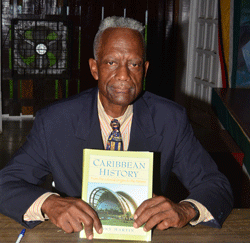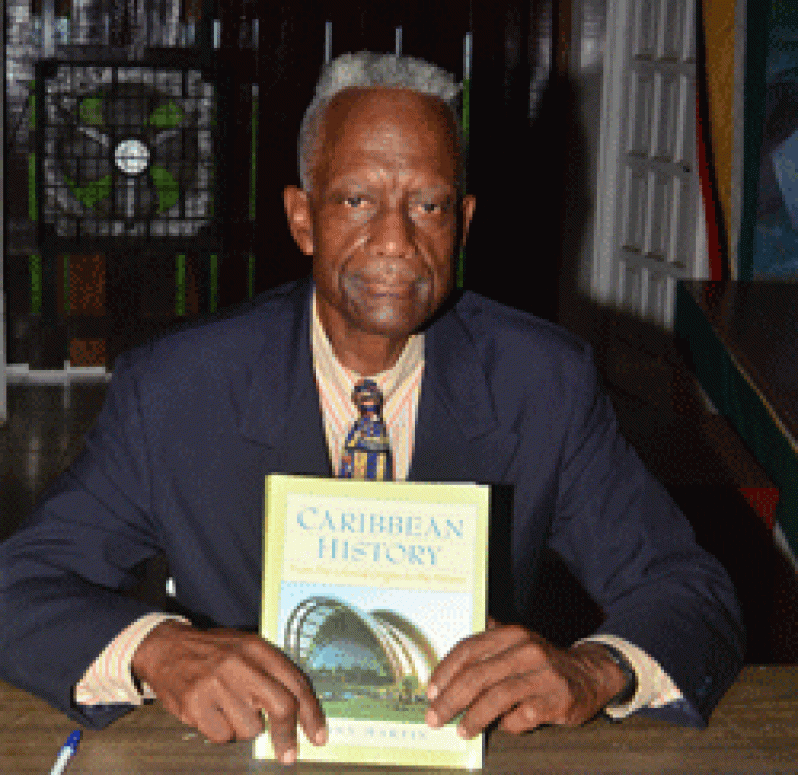CHEC refutes inaccuracies peddled by sections of the media
THE CHINA Harbour Engineering Company (CHEC), contracted to rebuild the Cheddi Jagan International Airport (CJIA), has refuted claims by some sections of the media that the agreement for the project was signed in Jamaica, insisting that all details surrounding the project and meetings held in that regard were done right here in Guyana.  During a press conference held at the Pegasus Hotel yesterday, the Regional Director of CHEC, Zhondong Tang, and other officials from the company, answered questions, mostly posed by the Kaieteur News.
During a press conference held at the Pegasus Hotel yesterday, the Regional Director of CHEC, Zhondong Tang, and other officials from the company, answered questions, mostly posed by the Kaieteur News.
Tang informed that, after recognizing Guyana was in need of an upgraded facility at the airport, the CHEC made a proposal to the country.
“We made the proposals to do the airport since, when we first flew in here, we saw that the facility is old, and it is very necessary to have (an) operating facility that is modern…cause the first thing a foreigner does when (he/she comes) to your country is look at your airport facility among other things. That is why we made the proposal to the Government, since we found it very necessary to have an extension to the runway and operating terminal.” Tang informed.
He said that CHEC, by agreement, then went ahead and did a feasibility study, which was followed by a number of meetings in that regard.
Tang reported that, last September, his company hosted a forum in Trinidad and Tobago which dealt with economic cooperation between China and the Caribbean. In light of this, he said, the CJIA project was expedited.
“Last September, there was a forum held in Trinidad and Tobago, which is for economic cooperation between China and Caribbean. One of our vice (premiers) announced that our company is setting up a fund to support the infrastructure in the Caribbean, and this spoke to all countries without any specific favour to any country.”
He explained that the Caribbean countries that were in a position to undertake infrastructural projects got the chance to so do through CHEC, as this was announced during the forum.
This, he said, paved the way for the final say by the Guyanese Government to go ahead with the signing of the contract last November.
Tang further clarified the misconception in the media that the CJIA project was kept a secret, noting that CHEC in no way tried to hide this development from the people of Guyana or the world at large.
“I want to correct (this misconception) and say that the contract was signed in Guyana, and not in Jamaica; and we did not handle this as a secret, and we have no intention to hide it.” Tang clarified.
Calvin London, CHEC’s Senior Business Development Manager for Latin America, said the process surrounding the project took approximately ten months of negotiations before the official contract was signed.
“The process took approximately ten months from the official contract to the preliminary designs, to feasibility study and negotiation process… The process took nine months, after which the project was signed in November of 2011,” London said.
According to him, CHEC never did inform any media or stated anywhere that the CJIA project was signed in Jamaica. He, however, reminded that the company’s head office is located in Jamaica.
“We never said that it was signed in Jamaica. You must understand that our regional office is in Jamaica, and so all our business is coordinated from there — the headquarters in Jamaica. That’s business from North America all the way down to South America and Latin America.” London highlighted.
In his response to the media, London said that since the CHEC is the contracting company and not the client, China Harbour would not be in any position to make the feasibility study available for public viewership.
“You have to remember we are not the client, we will not be able to make the feasibility study available to you. But part of the arrangement was that we funded those studies. Again, CHEC did the studies, but we bore the costing ourselves. The Government is the client; they would have to release those papers. We have not been paid (because) we undertook the studies ourselves,” London maintained.
London noted that the Government of Guyana was very prudent with the design, and not until government functionaries were satisfied with the design were they able to go ahead with costing the project.
He said: “We did a feasibility study first. We had to do some pre-engineering work to come up with a design. From that point, the Government of Guyana, through the Ministry of (Public) Works, negotiated based on (the) conceptual design; and they were quiet prudent, and the design changed maybe over ten times, until we came to a design — we came to an agreement — which they (could) afford.”
Meanwhile, Huntley Medley, Public Relations Consultant to the CHEC, said that his company can only present the facts surrounding the issue, and it is left up to the people of Guyana to make their decision to believe or not.
“What we can do is present the facts. It is up to you as citizens to digest and accept or not accept the facts,” he said.
Further, he stated, CHEC has been involved in intense negotiations with the Government of Guyana regarding the proposal that was made. Accordingly, he said the cost was arrived at following these major deliberations.
“The translations by Mr. Tang also spoke to the negotiations process that China Harbour (Engineering Company), having made a proposal to the Government of Guyana, was involved in a very intense process of negotiations.”
Medley said whatever price was arrived at, in terms of the cost of the airport, resulted from protracted figures coming out of negotiations, based on very serious engineering work that had to be done.
Under the US$138M loan at two percent interest per year, a Chinese company would extend the runway to 10,800 feet, to accommodate much larger aircraft; construct a new terminal building; construct eight boarding gates; and install modern equipment.
The China Communications Construction Company (CCCC) and its subsidiaries, including CHEC, have been debarred by the World Bank from participating in any project in which the World Bank is involved, effective from January 12, 2009 to January 12, 2017.
In Jamaica, CHEC has been blasted after a probe into a US$400M contract, awarded on a sole-source basis. However, the company has since explained that the issue raised by Jamaica’s Office of the Contractor General was inherited by CCCC when it took over China Road and Bridge Corporation (CRBC) in 2005. That issue dates back to 2002, and relates to CRBC, which was invited by the Government of the Philippines to bid for a World Bank-funded road project.
CHEC’s Regional Director Zhongdong Tang said in a release that the project was abolished by the Philippine Government in 2006, as a result of disputes between that government and the World Bank.
He maintained that CHEC is not involved, and has never been involved, in any activity that has attracted any sanction by the World Bank. “CHEC itself has never been under any investigation by the World Bank,”
He said.
Tang said that, in January 2009, an announcement by the World Bank and subsequent newspaper articles alleged that CRBC was engaged in collusive practices in relation to the World Bank-financed road project in the Philippines.
According to the announcement, the World Bank decided to impose debarment on seven firms (including three Chinese companies) and one individual for the alleged matter. CRBC received no claim or allegation from the Philippine Government, or the owner of the project.
CRBC has been maintaining, since January 2009, that the World Bank’s allegation against the company has no accurate or legal merit.
CJIA expansion project…
SHARE THIS ARTICLE :
Facebook
Twitter
WhatsApp




.jpg)









